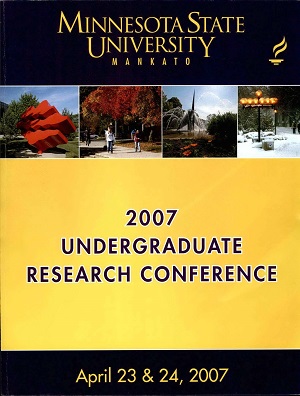Trust Formation Across Multiple Levels of Virtuality
Location
CSU 204
Start Date
23-4-2007 10:00 AM
End Date
23-4-2007 12:00 PM
Student's Major
Psychology
Student's College
Social and Behavioral Sciences
Mentor's Name
Andrea Lassiter
Mentor's Department
Psychology
Mentor's College
Social and Behavioral Sciences
Description
When team members are separated by offices, cities, or continents, they are considered "virtual." Virtual group or teamwork is becoming more common in today's world. Since trust is essential for effective team performance, it is also required for virtual teams. This study looked at the formation of trust in relation to different levels of group virtuality. Participants were undergraduate students from Minnesota State University's psychology classes and worked in pairs on the game. Command and Conquer: Generals. Teams either worked together face-to-face; met first and then were separated to work together; or were completely separated having to work together without seeing one another. Face-to-face groups were expected to have higher levels of trust than virtual groups, while the group that was allowed to meet first was expected to have higher levels of trust than the completely virtual group. In turn, higher performance scores were expected for groups who had higher levels of trust.
Trust Formation Across Multiple Levels of Virtuality
CSU 204
When team members are separated by offices, cities, or continents, they are considered "virtual." Virtual group or teamwork is becoming more common in today's world. Since trust is essential for effective team performance, it is also required for virtual teams. This study looked at the formation of trust in relation to different levels of group virtuality. Participants were undergraduate students from Minnesota State University's psychology classes and worked in pairs on the game. Command and Conquer: Generals. Teams either worked together face-to-face; met first and then were separated to work together; or were completely separated having to work together without seeing one another. Face-to-face groups were expected to have higher levels of trust than virtual groups, while the group that was allowed to meet first was expected to have higher levels of trust than the completely virtual group. In turn, higher performance scores were expected for groups who had higher levels of trust.
Recommended Citation
Woller, Amanda. "Trust Formation Across Multiple Levels of Virtuality." Undergraduate Research Symposium, Mankato, MN, April 23, 2007.
https://cornerstone.lib.mnsu.edu/urs/2007/oral-session-04/2



